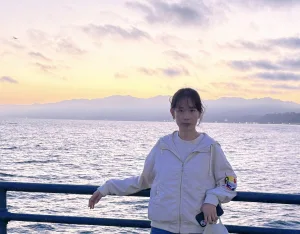 My name is Xiaofei Shi and I was recently honored with the Fred Scarf Award from the American Geophysical Union for best thesis in Space Physics and Aeronomy. During my PhD, I studied how charged particles in space, such as electrons, gain and lose energy as they move around near Earth. These processes, though invisible, are important because they shape the radiation belts that surround our planet and drive what we call space weather.
My name is Xiaofei Shi and I was recently honored with the Fred Scarf Award from the American Geophysical Union for best thesis in Space Physics and Aeronomy. During my PhD, I studied how charged particles in space, such as electrons, gain and lose energy as they move around near Earth. These processes, though invisible, are important because they shape the radiation belts that surround our planet and drive what we call space weather.
Space weather is drawing increasing attention because of its potential impact on modern technology and human spaceflight. Fundamentally, science focused on wave-particle interactions and charged particle dynamics broadens our understanding of space weather. Practically, it strengthens our ability to predict extreme radiation environments in space—conditions that can damage satellites or put astronauts at risk. In other words, understanding the energetic particles around Earth isn’t just an academic exercise; it has real implications for the technologies and people who venture beyond our atmosphere.
The Earth, Planetary, and Space Sciences department at UCLA, where I did my work, has been a leader in this area and I’m proud that the work I do was acknowledged.
Most past theories did not fully explain how the electrons get to near-relativistic energy upstream of Earth’s bow shock, and my work showed that a complex process can cause it. In fact, I found that electrons can be accelerated in multiple steps, almost like climbing a ladder, through a chain of processes that earlier models didn’t capture. This discovery revealed a new way that particles can be energized in space.
One of the hardest challenges I faced was making sense of data that showed electrons being accelerated across a wide range of energies. No single explanation fit the observations. After a lot of trial and error (and many conversations with collaborators) I realized the answer was to combine different approaches. By using both computer simulations and statistical analysis of spacecraft data, I built a more complete picture of how these multi-step processes work.
This research was very collaborative, and I’m grateful to my advisor and coauthors who guided and supported me. Now that I’ve finished my dissertation, I plan to continue this work as a postdoctoral researcher. There’s still so much to learn about the particle acceleration happening around Earth, and I’m excited to keep exploring them.
